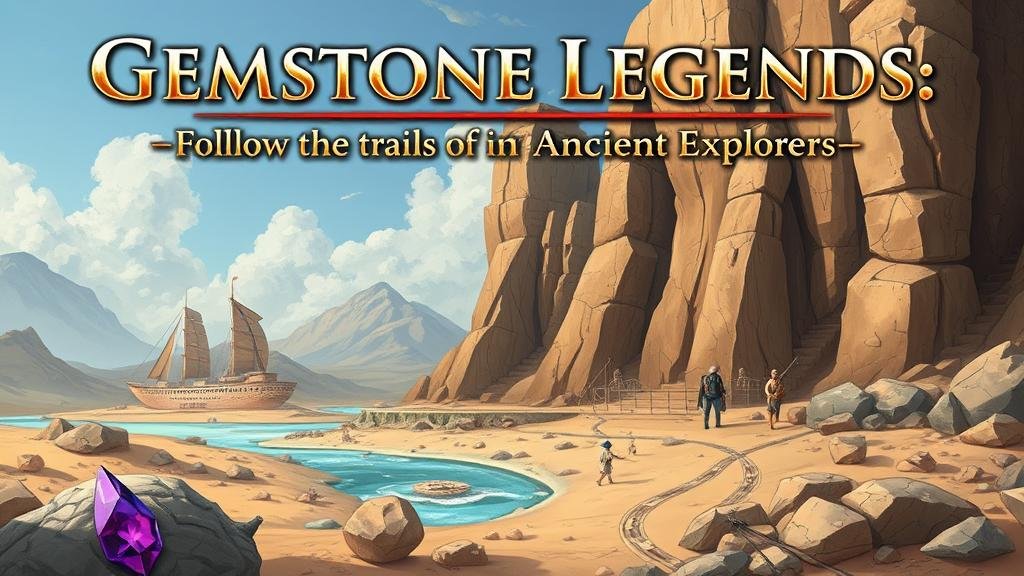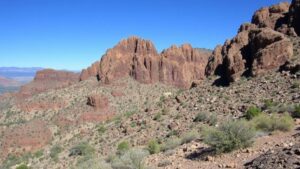Gemstone Legends: Following the Trails of Ancient Explorers
Gemstone Legends: Following the Trails of Ancient Explorers
The fascination with gemstones has captivated human beings for millennia. From ancient civilizations to contemporary rockhounds and mineral collectors, the allure of these natural treasures is profound. This article delves into the journeys of ancient explorers in pursuit of gemstones and how modern enthusiasts can follow in their footsteps while expanding their collections.
A Brief History of Gemstone Exploration
Historically, gemstones have been sought after not just for their beauty but also for their supposed supernatural properties. Ancient explorers traversed rugged terrains and perilous routes to uncover these precious stones. For example, the renowned Silk Road was not merely a trade route for silk but also a channel through which gemstones like rubies and sapphires were exchanged. According to the World Gem Society, around 70% of gem deposits worldwide are found in regions that were once part of ancient trade paths.
Famous Gemstone Expeditions
Many prominent explorers embarked on significant journeys that contributed to gemstone science and culture. Here are notable expeditions:
- Marco Polo: His travels through Asia in the late 13th century introduced Europeans to jade, which was carved and revered in Chinese culture.
- Sir Walter Raleigh: In the late 16th century, he led expeditions to South America, where he heard tales of El Dorado and sought to find emeralds.
- Ferdinand de Lesseps: Though primarily known for the Suez Canal, his expeditions in the Mediterranean also focused on the extraction of gemstones along the Red Sea.
Understanding Gemstone Formation
The scientific process of how gemstones are formed is as fascinating as the stories behind them. Most gemstones are formed under high-pressure and high-temperature conditions deep within the Earth’s crust. For example:
- Diamonds: Formed at depths of over 150 kilometers beneath the Earth’s surface, where temperatures exceed 1,000°C.
- Emeralds: Typically formed in metamorphic rocks that have undergone heat and pressure, often found in Colombia and Zambia.
Understanding the geological conditions that create gemstones can help collectors identify where to search for specific types of stones responsibly.
Practical Tips for Rockhounds and Mineral Collectors
For those interested in locating and collecting gemstones, consider the following tips:
- Research Local Geology: Understand the geological formations in your area. Specific types of minerals are often located near similar rocks.
- Join Local Clubs: Engaging with rockhound societies can provide insights into the best locations for collection and networking opportunities.
- Attend Gem Shows: These events feature experts who can guide you regarding the best practices and legalities of gemstone collection.
Environmental and Ethical Considerations
While pursuing your gemstone collection, it is crucial to adhere to ethical and environmental guidelines. The gemstone industry has faced scrutiny for environmental degradation and unethical mining practices. The following practices are recommended:
- Source Responsibly: Purchase gemstones from reputable dealers who adhere to ethical regulations.
- Minimal Disturbance: When collecting field specimens, disturb as little of the environment as possible and follow local regulations.
Real-World Applications: Collecting and Trading Gemstones
In todays market, gemstones not only serve as collectibles but also as viable investments. global gemstones market was valued at approximately $24 billion in 2020 and is expected to grow. Collecting gemstones can benefit one’s portfolio and beauty–a unique combination.
Conclusion: Chart Your Own Path
Following the trails of ancient explorers can be both thrilling and educational for modern rockhounds and mineral collectors. Armed with historical context, scientific knowledge, and practical tips, you can embark on your journey into the mesmerizing world of gemstones. As you explore, remember to balance your quest for beauty with the responsibility of ethical collecting practices. Happy hunting!



